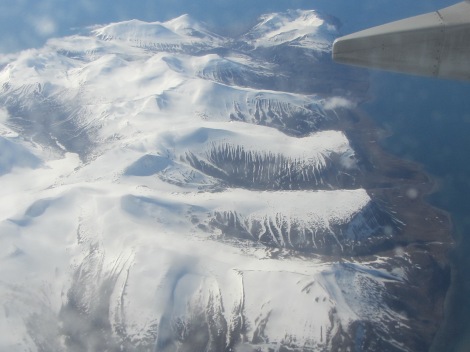
Panama City from atop the Canopy Tower. It reminded me of the Emerald City of Oz.
We traveled to Panama in early October mainly for the hawk migration, but there were many other fascinating sights such as the Three-toed Tree Sloths munching on the Cecropia leaves outside our window.

We stayed at Canopy Tower an old converted US Military radar installation. The food was excellent with menus prepared by the owner’s Mother (?) who was a well known chef. We came back from one day’s outing to find the remnants of that cuisine being sampled by seven juvenile Coatis. They didn’t mind in the least if we watched them and they were relatively respectful of each other, unlike their cousins the Raccoons..

It was a thoroughly enjoyable trip bird-wise as well with my eBird total of 195 species. There were beautiful insects with Blue Morpho butterflies fluttering everywhere. I also encountered a creature completely new to me, a Helicopter Damselfly (Megaloprepus caerulatus). It was lovely at rest but absolutely mesmerizing in flight, twirling delicately down the path (click on the name for a link to a short video)

Here is the Helicopter Damselfly at rest. It is huge, about 7″ long and with a similar wingspan. (Photo courtesy of Christine Howe, all rights reserved)
But of course the hawk migration was the primary reason for our visit. We drove to Ancon Hill where the official Panama hawk watch is held. We were told that almost no hawks had come through on the previous day but they had heard from Veracruz, Mexico that they should expect large influx were due this day. We saw very few at first but then they started rising from the canopy and flying in from the west. They gathered and rose swirling (kettling) until they reached the top of the thermal and then slid off to the east. We were told that in one half-hour period we had seen approximately 18,000 hawks, mostly Swainson’s Hawks and that every Swainson’s Hawk in North America passes over the Panama Canal on its way to its wintering grounds in Argentina. I found the experience very calming, watching them floating in, up and on their way, hundreds at a time.

There are a few Turkey Vultures and Broadwings but most of these birds are Swainson’s Hawks, a tiny fraction of the spectacle.























































